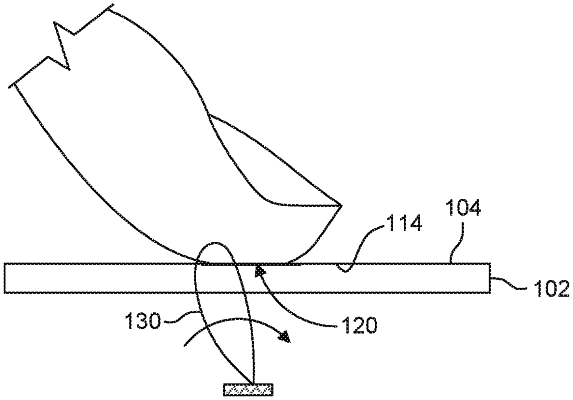| CPC G06F 3/0436 (2013.01) [G06F 3/0416 (2013.01)] | 30 Claims |

|
1. A touch sensor, comprising:
a housing having an ultrasound port;
a touch structure coupled to the housing and arranged over the ultrasound port such that the ultrasound port forms an enclosed interior volume, wherein the touch structure comprises a touch interface and an inner interface arranged opposite to the touch interface, wherein the inner interface faces towards the enclosed interior volume;
an array of transmit transducers arranged inside the enclosed interior volume, wherein each transmit transducer is configured to transmit a respective ultra-sonic transmit wave in response to being activated by a respective excitation signal, wherein a main directivity lobe directed at the touch interface is produced by at least one ultra-sonic transmit wave;
an array of receive transducers arranged inside the enclosed interior volume and acoustically coupled to the array of transmit transducers, wherein the array of receive transducers receive an ultra-sonic reflected wave produced at least in part by internal reflection of the main directivity lobe at the touch interface and convert the ultra-sonic reflected wave into at least one measurement signal;
a controller configured to modulate an activation of the transmit transducers to control a directivity characteristic of the main directivity lobe by selectively generating at least one respective excitation signal; and
a receiver circuit configured to receive the at least one measurement signal, detect edges of a contact patch of a touch event present at the touch interface based on the at least one measurement signal, determine a size of the contact patch based on the detected edges, and determine an amount of contact force applied during the touch event based on the size of the contact patch.
|